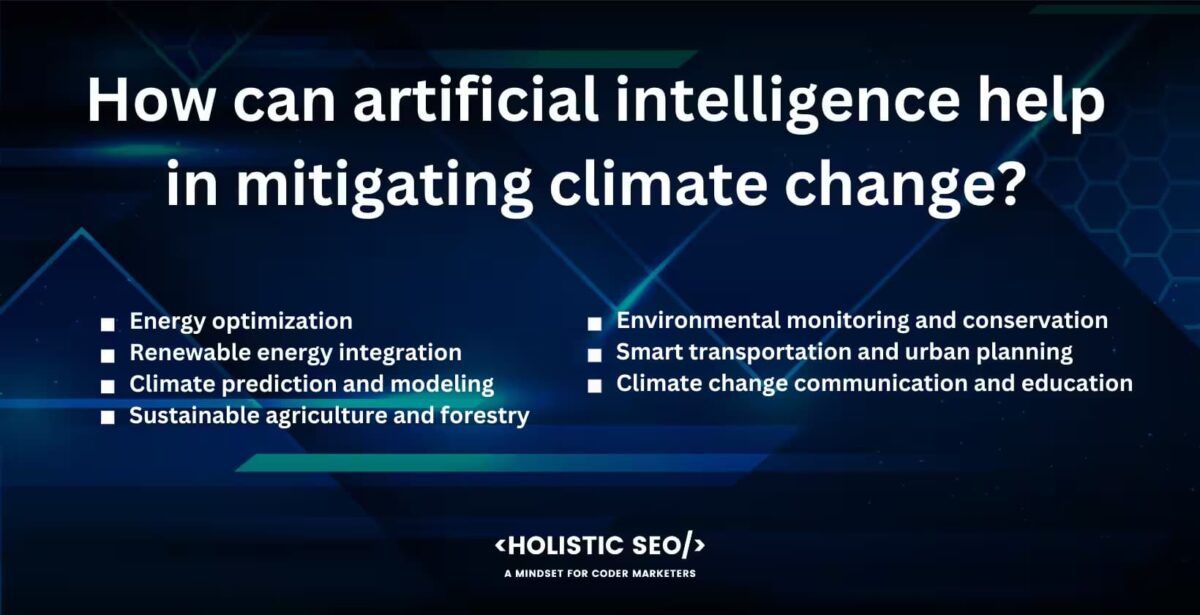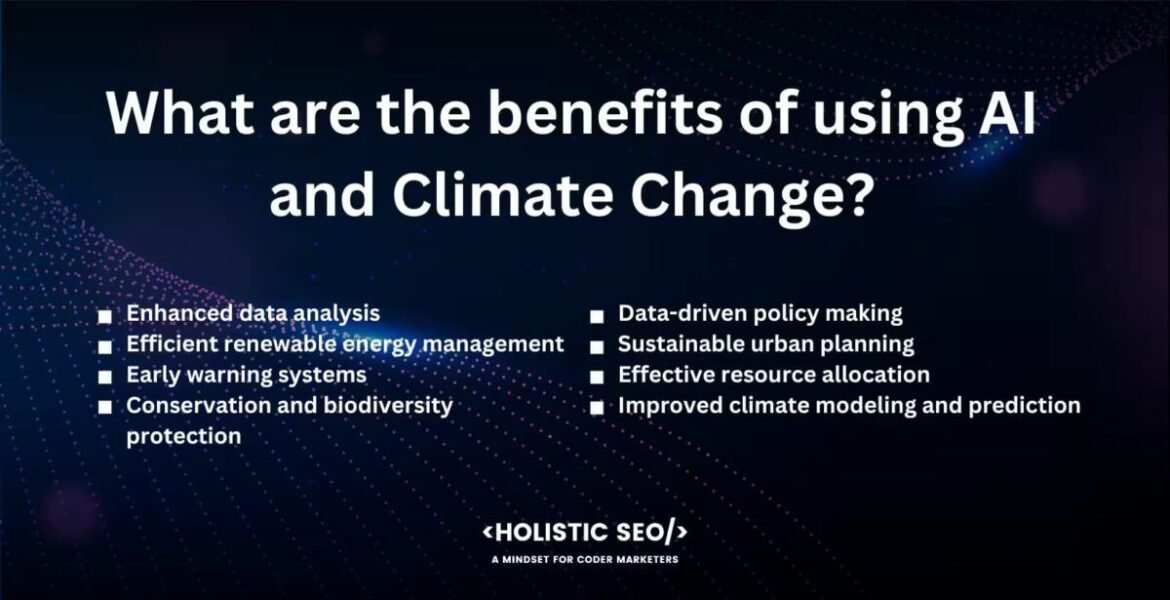
Introduction
Overview of AI and Climate Change
Artificial Intelligence (AI) has emerged as a powerful tool that holds immense potential to address one of the most pressing challenges of our time: climate change. As global temperatures rise, ecosystems falter, and extreme weather events become increasingly frequent, the urgency to find effective solutions intensifies. AI, with its ability to analyze vast amounts of data, predict outcomes, and optimize processes, can often offer insights and strategies that are beyond human capability.
For instance, AI can process climate models much faster than traditional methods, allowing scientists to predict changes in climate patterns more accurately. This capability not only aids in understanding potential impacts but also enhances our ability to act before situations become critical. Through advanced algorithms and machine learning techniques, AI can identify trends in environmental data, helping researchers and policymakers make informed decisions grounded in solid evidence.
Importance of Addressing Climate Change Through AI
Addressing climate change through AI is not merely an option—it may be a necessity. The consequences of inaction are dire: catastrophic natural disasters, food and water shortages, and increased displacement of communities. Leveraging AI to combat these outcomes opens various avenues for mitigation and adaptation strategies.
Some notable benefits include:
- Enhanced Efficiency: AI can optimize energy consumption in buildings and transportation, leading to significant reductions in carbon footprints.
- Predictive Analytics: By forecasting weather patterns, AI can aid in agricultural planning, ensuring food security while minimizing waste.
- Cost Reduction: Automating processes with AI can lead to substantial cost savings for organizations committed to sustainable practices.
By utilizing AI, society not only stands a better chance at mitigating the extreme impacts of climate change but can also cultivate a more sustainable future. This interplay between advanced technology and environmental stewardship is vital. As such, recognizing AI’s pivotal role in climate change solutions is critical for any forward-thinking approach. As we dive deeper into this journey together on TECHFACK, the possibilities of harnessing AI for climate solutions become clear—combined, we can design a resilient pathway toward a more sustainable world.

AI Applications in Climate Change Solutions
Data Analysis and Prediction Models
As we move forward in our understanding of how AI can influence climate change solutions, one of the most significant applications lies in data analysis and prediction models. The complexity of climate systems generates enormous amounts of data, which can overwhelm traditional analysis methods. However, AI excels at processing and interpreting this data swiftly and accurately.
For example, researchers can use AI algorithms to analyze decades of climatic data, identifying intricate patterns that might escape human analysts. This capability allows for:
- Improved Climate Modeling: AI enhances the accuracy of climate predictive models, helping scientists to simulate various scenarios based on different greenhouse gas emission pathways.
- Real-Time Data Processing: With machine learning, climate data can be analyzed in real-time, offering immediate insights critical for decision-making, especially in time-sensitive situations, such as weather emergencies.
Resource Optimization and Energy Efficiency
In terms of resource optimization and energy efficiency, AI shines as a transformative tool. It helps businesses and governments alike to fine-tune their energy consumption, thus reducing their carbon footprints.
Consider this simple illustration: smart grids powered by AI can analyze energy demand in real-time, adjusting supply accordingly to prevent energy wastage. Key benefits include:
- Dynamic Resource Allocation: Businesses can utilize AI to predict energy needs, optimizing energy use during peak and off-peak hours.
- Sustainable Manufacturing: Industries adopting AI-driven processes can minimize resource consumption and maximize production efficiency.
Disaster Response and Risk Reduction
When it comes to disaster response and risk reduction, AI’s role is increasingly vital. The ability to predict natural disasters, such as hurricanes or wildfires, means communities can prepare in advance and minimize damage.
- Forecasting Technology: Machine learning models can predict the likelihood of disasters by analyzing weather patterns and historical data.
- Disaster Management Systems: AI can guide evacuations and resource distribution during disasters, making efforts more efficient and organized.
In summary, AI applications in climate change solutions—from sophisticated data analysis and optimization of resources to enhancing disaster response—demonstrate a promising commitment to creating a sustainable future. As we continue to explore these innovations on TECHFACK, it becomes evident that the collaboration between technology and environmental stewardship holds limitless potential to combat climate challenges effectively.

Challenges and Ethical Considerations
Data Privacy and Security Issues
While the application of AI in addressing climate change presents incredible opportunities, it also brings several challenges and ethical considerations that can’t be overlooked. One of the most pressing concerns is data privacy and security. As AI systems rely heavily on vast amounts of data, protecting individual privacy becomes a critical issue.
Consider a scenario where organizations collect extensive climate-related data that includes personal information, such as location or consumption patterns. The potential misuse of this data poses significant risks:
- Unauthorized Access: There’s always a risk of breaches that expose sensitive information to malicious actors.
- Data Misuse: Organizations could inadvertently share personal data with third parties without proper consent.
To mitigate these risks, stringent data governance and privacy protocols must be implemented, ensuring that data is used responsibly and ethically.
Potential Bias in AI Algorithms
Another major concern is the potential bias inherent in AI algorithms. Machine learning models learn from historical data, and if this data reflects existing biases, the AI could perpetuate or even amplify them.
For instance, if an AI system is trained on historical data that demonstrates socio-economic disparities, its recommendations could inadvertently favor certain groups over others. Key implications include:
- Inequitable Resource Allocation: Disparities may arise in the distribution of resources during climate-related crises.
- Lack of Representation: Certain communities may be underrepresented in datasets, leading to skewed AI insights.
Addressing bias requires ongoing evaluation and diverse input to ensure that AI solutions are fair and equitable.
Impact on Jobs and Workforce
Lastly, the integration of AI in various sectors raises concerns about its impact on jobs and the workforce. While AI can enhance efficiency and create new opportunities, it can also lead to job displacement in industries reliant on traditional labor.
Reflecting on personal experiences, the fear of automation can sometimes overshadow the potential for new roles that emerge in tech-driven environments. Some key considerations include:
- Reskilling Needs: Workers may need retraining to transition into new roles as outdated positions diminish.
- Job Creation: AI also presents opportunities in fields like AI ethics, data science, and environmental monitoring.
In summary, as the use of AI technologies grows in climate change solutions, it is crucial to navigate the challenges and ethical considerations. Acknowledging issues of data privacy, algorithmic bias, and workforce impact will ensure that these advancements serve all communities equitably. On TECHFACK, we believe that openly discussing these challenges will help pave the way for sustainable and inclusive AI-driven solutions.

Collaborations and Initiatives
Public-Private Partnerships
As we navigate the complexities of climate change solutions, public-private partnerships (PPPs) emerge as a vital mechanism for harnessing resources and expertise from both sectors. These collaborations combine the innovative capability of the private sector with the regulatory oversight and long-term vision of the public sector.
For example, a city might work with technology companies to develop smart grids that optimize energy use. This partnership could enable:
- Shared Resources: Governments provide data and regulatory support while private companies offer technological expertise.
- Increased Investment: Private investment can lead to quicker implementation of sustainable projects, reducing the financial burden on public funds.
These partnerships can also foster innovation, leading to groundbreaking advancements in climate technology that neither sector could achieve independently.
Global Efforts and Agreements
On the global stage, cooperation is essential to combat the pervasive threat of climate change. International agreements such as the Paris Agreement exemplify the unified efforts of nations working together to set ambitious climate goals.
Through these agreements, countries commit to:
- Reducing Greenhouse Gas Emissions: Establishing national targets aligns global emissions reduction efforts.
- Financial Support for Developing Nations: Wealthier nations often pledge funds to support poorer countries in their climate change mitigation efforts.
Such global initiatives highlight the importance of unity and shared responsibility in addressing an issue that transcends borders, fostering a sense of collective urgency and action.
Research and Innovation Funding
To further bolster the fight against climate change, substantial investment in research and innovation is essential. Funding plays a pivotal role in supporting cutting-edge research that can lead to new technologies and solutions.
Here are some key avenues for funding:
- Government Grants: Many countries allocate funds specifically for climate research initiatives.
- Private Sector Investment: Corporations increasingly invest in sustainable technology, recognizing the potential for profit alongside societal benefit.
Innovation hubs and research institutions can also benefit from this funding, creating ecosystems where new ideas can take root and flourish. By fostering collaboration between scientists, entrepreneurs, and investors, we can cultivate breakthrough solutions poised to make a significant impact.
In conclusion, collaborative efforts through public-private partnerships, global agreements, and dedicated funding for research form the backbone of effective climate change solutions. By working together across various sectors and borders, we can pave the way for a more sustainable future. As we continue this journey on TECHFACK, these partnerships highlight our shared commitment to innovation and meaningful change in addressing climate challenges.

Future Outlook
Advancements in AI Technology
Looking ahead, the rapid advancements in AI technology promise to revolutionize how we approach climate change mitigation. With developments in areas such as deep learning, natural language processing, and edge computing, the potential applications of AI are virtually limitless.
For instance, consider the emergence of AI-driven tools that can analyze satellite imagery to track deforestation or assess the health of ecosystems. These advancements enable:
- Real-time Monitoring: AI can provide continuous oversight of environmental changes, allowing for quicker responses to adverse effects.
- Enhanced Decision Making: By synthesizing large amounts of data, AI can support policymakers in making informed decisions based on accurate predictions and analysis.
As technology evolves, we can expect even more sophisticated solutions that harness the power of AI to address complex climate challenges.
Potential Impact on Climate Change Mitigation
The impact of AI on climate change mitigation strategies is profound. Implementing AI can lead to significant reductions in carbon emissions while promoting sustainable practices across various industries.
For example, the agriculture sector can utilize AI for precision farming, which optimizes resource use and minimizes waste. Key benefits include:
- Better Crop Management: AI algorithms can analyze soil health and weather patterns, guiding farmers in efficient planting and irrigation practices.
- Enhanced Supply Chain Management: With improved data analysis, AI can help reduce food spoilage and optimize distribution routes, further decreasing emissions.
These advancements showcase how AI-driven initiatives not only help mitigate climate change but also enhance overall efficiency in various sectors.
Opportunities for Sustainable Development
As we contemplate the future, the intersection of AI and sustainable development presents numerous opportunities. The digital economy enabled by AI can pave the way for green innovation, creating jobs in emerging fields while addressing climate issues.
Some promising avenues include:
- Sustainable Energy Solutions: Innovations in AI can optimize renewable energy sources, making them more viable and accessible.
- Smart Cities: AI can contribute to the development of smarter, more sustainable urban environments, improving public transportation and energy consumption.
In summary, the future holds immense promise as advancements in AI technology align with the world’s need for climate change mitigation and sustainable development. By embracing these innovations, communities can create resilient systems that address urgent environmental issues while fostering economic growth. At TECHFACK, we remain optimistic about the role technology can play in pioneering a sustainable future, inviting readers to join us in exploring this transformative journey.

